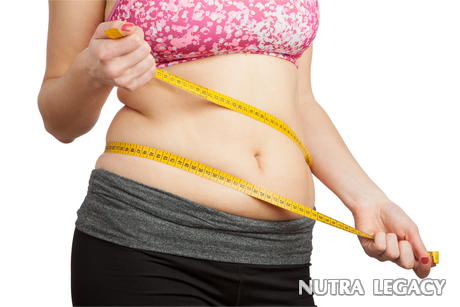Good Diet Helps to Get Rid of Belly Fat

- There is a clear correlation between having excess pounds packed on around the waist and increased risks of diabetes, high blood pressure, sleep apnea, and cancer.
- Make sure you don’t skimp on protein.
Although being overweight typically puts people at risk for chronic health problems, if those extra pounds of fat build up around the stomach area, then you could be increasing those risks. Below is some additional information about that increased danger and what you can do now to speed up the loss of belly fat.
Why Belly Fat Loss is Important
Research is still being conducted to determine why belly fat seems to be so dangerous. What is known, however, is that there is a clear correlation between having excess pounds packed on around the waist and increased risks of diabetes, high blood pressure, sleep apnea, and cancer. When you don’t experience belly fat loss, you can have lower levels of high-density lipoproteins (HDL) and higher triglyceride levels. The additional fat can also cause significant metabolic changes because the body does not know what to do with fat that is not burned.
Starting Belly Fat Loss
Although exercise is a critical component of jump-starting your metabolism and of building the muscle needed to keep it high, you won’t be able to get rid of belly fat through sit ups or stair-climbing alone. Instead, you need to start changing your eating habits.
You should start eating more frequently. Researchers recommend having something to eat every two or three hours. What happens is that 10 percent of all the calories we burn in a day come from digesting our foods. That means the more frequently you eat, the more your body is going to be working on digestion and burning calories and that way you’ll be able to keep your metabolism up.
Some fat in your diet is good, but you have to know which fats to include and which to cut out. Trans fats are a definite no because of their connection to heart disease. You also want to exclude saturated fats, such as those found in fried foods. However, you should eat more omega-3 fatty acids like those found in some types of fish. These fatty acids can boost your HDL and work against those nasty low-density lipoprotein (LDL) molecules.
Another good idea is to steer clear of processed and packaged foods as much as possible. When you eat fresh foods, you have more control over ingredients and portions. You also don’t have to worry about extra fat, sodium, and preservatives.
If you do choose packaged foods, you have to be careful when choosing items marked as “low fat.” Many people are easily fooled by that label and think the product is going to be better for them. The term, however, does not mean fewer calories or carbohydrates, as it seems to imply. This is why it’s always a good idea to read the labels before you buy.
Make sure you don’t skimp on protein. When you leave out protein, you won’t be able to build muscle mass, which will not help increase your metabolism. Try to eat more fish and poultry than red meat. When you eat any kind of animal meat product, you should trim off extra fat and you should always avoid frying it. Another good idea is to substitute other types of protein, such as tofu, veggie burgers, or beans.
The information supplied in this article is not to be considered as medical advice and is for educational purposes only.
|
 10 Nov 2008 10 Nov 2008 |
